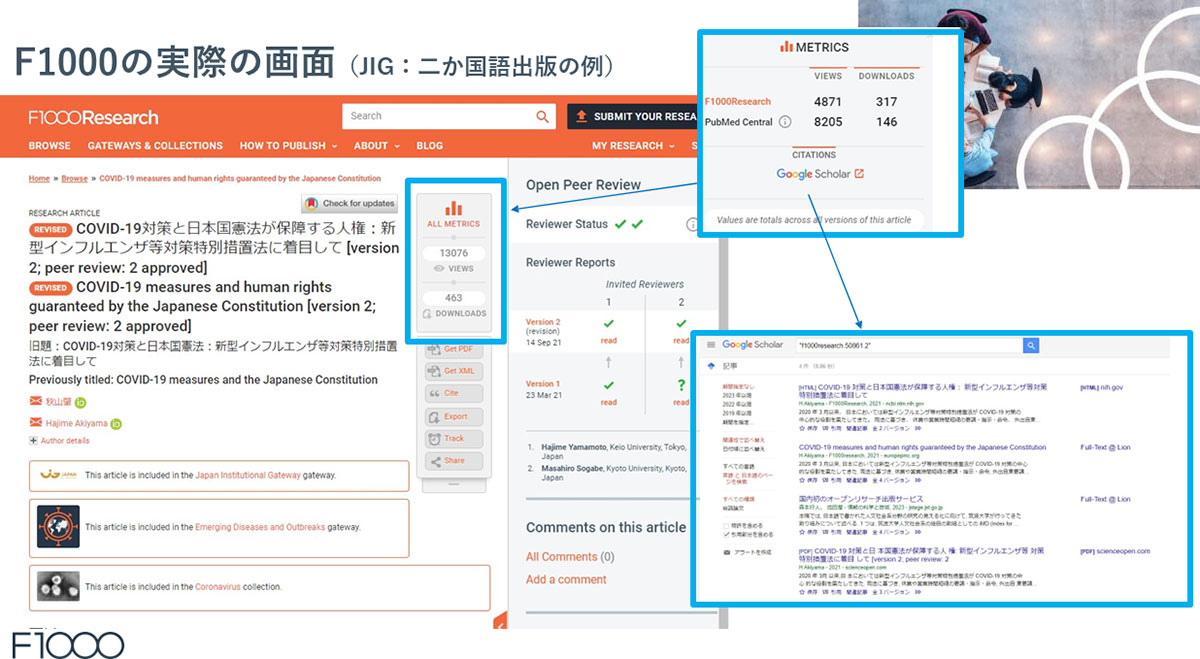- HOME
- The Background of Open Access
The Background of Open Access
Methods for Making Papers Open Access

There are two main ways to make papers open access:
Green Open Access (Self-archiving)
Papers are made open access through institutional repositories operated and maintained by universities (journals may impose certain conditions for public release). NITech researchers can register their papers in the Nagoya Institute of Technology Repository System (hereinafter, “NITech Repository System”).
For more information on publishing papers in the NITech Repository System, please refer to Green Open Access (Self-archiving)(Japanese)(Campus access only).Publication in Gold Open Access Journals
Gold Open Access journals (OA journals) are journals where academic publishers make papers openly accessible. While traditional journals cover publication costs (including peer review and editing) through subscription fees paid by readers (including universities and research institutions), OA journals often require authors to pay an article processing charge (APC).
Types of Open Access
| Gold OA | Papers published in journals that readers (including institutions such as universities and libraries) do not pay subscription fees to access.Authors pay APCs. |
|---|---|
| Hybrid OA | In subscription-based journals, some articles are made freely available when authors pay APCs. |
| Green OA | Authors make papers that they published in traditional academic journals (i.e., subscription-based journals) available through institutional repositories and similar platforms. This is also known as self-archiving. |
| Diamond OA | Papers are made open access through costs covered by research institutions, public funding agencies, publishers, or academic societies rather than authors. This model is also referred to as Platinum OA. |
| Bronze OA | Papers are made openly available by publishers but without clearly stated reuse rights or licenses. Many of these papers are only temporarily accessible through publisher platforms. |
Publication through Japan Institutional Gateway (JIG)
The Japan Institutional Gateway is a platform where researchers based in Japan can publish their research findings (in both English and Japanese) in an open research format. All research outputs on this gateway are published as open access, making them freely accessible to anyone. The platform adopts the F1000Research publishing model, which combines the advantages of preprints (rapid publication without editorial bias) with mechanisms that ensure quality and transparency (invited open peer review, archiving, and inclusion in bibliographic databases).
When papers are submitted to JIG, they are tagged in Google Scholar, and after passing peer review, they are indexed in many databases including Scopus and PubMed. The platform was originally operated by the University of Tsukuba as “F1000 Research University of Tsukuba Gateway.” In August 2022, however, it was relaunched as the JIG to expand access to other universities, now supporting publications in Japanese. NITech joined JIG at the end of fiscal year 2023 to provide an additional option for making research outcomes open access. Any researcher at NITech can submit their papers and other research outputs to JIG.

How to Submit Papers to JIG
Benefits and Important Considerations for Open Access Publishing
Benefits of Open Access
There are several key benefits of making your research open access:
- Broader Research Impact
Open access publications typically reach a wider audience, which can lead to increased citation rates—a key metric for research impact.
- Enhanced Access to Research
By removing paywalls, researchers can immediately access papers without financial barriers, facilitating more efficient research progress.
- Expanded Research Networks
Access to research findings across national and disciplinary boundaries can broaden your research perspectives and create new opportunities for collaboration.
Potential Risks
The rise of predatory journals that exploit the open access model poses significant risks to researchers. Publishing in these journals, even inadvertently, can have serious consequences. Your work may not be recognized as a legitimate research output, the credibility of your research findings may be questioned, and there could be negative implications for your academic career.
Nagoya Institute of Technology Open Access Policy
Nagoya Institute of Technology established its Open Access Policy on September 4, 2024, with the aim of broadly disseminating intellectual achievements produced by all those involved in research at the Institute—including faculty members, technical staff, graduate students, and undergraduate students (hereinafter referred to as “faculty members, etc.”)—to contribute to the development of research and education as well as to society. Under this policy, faculty members and others at NITech can either make their academic papers published after the policy’s establishment open access or declare when this is not possible.
- Nagoya Institute of Technology Open Access Policy
- Nagoya Institute of Technology Open Access Policy Guidelines
APC Support at Nagoya Institute of Technology
NITech provides the following types of support:
- HOME
- The Background of Open Access

